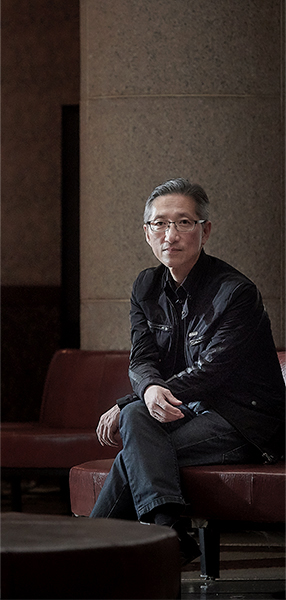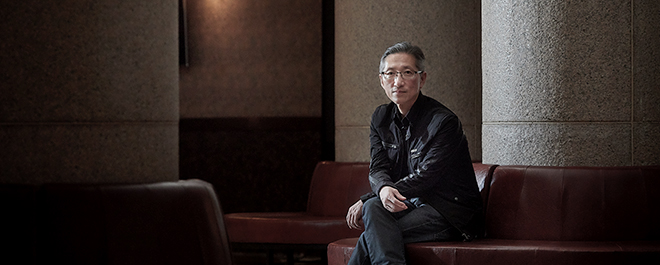
Contents




Flowers at Suncheon Bay

Artistic Director of Dance Makes Modern Dance like Live Film

Quilting Squares of Tolerance

2018 Inter-Korean Summit




Let's Dance!
Artistic Director of Dance Ahn Sung-su
Last month, a cheerful dance show was held at the Seoul Arts Center.
The performance was praised as “a rhythmical and fantastic clash of swing jazz music of the times and modern dance,” and it was performed by the Korea National Contemporary Dance Company and a Swedish swing jazz band.
Artistic director of dance Ahn Sung-su, who has always produced shows that have a special chemistry with live music, has done it again in 2018.
The show combines the excellent technique and delicate expressiveness of17 dancers, and it was packed full of fun without boring anyone.
The performance was, indeed, worthy of Ahn’s name.
Written by Park Ji-yeon
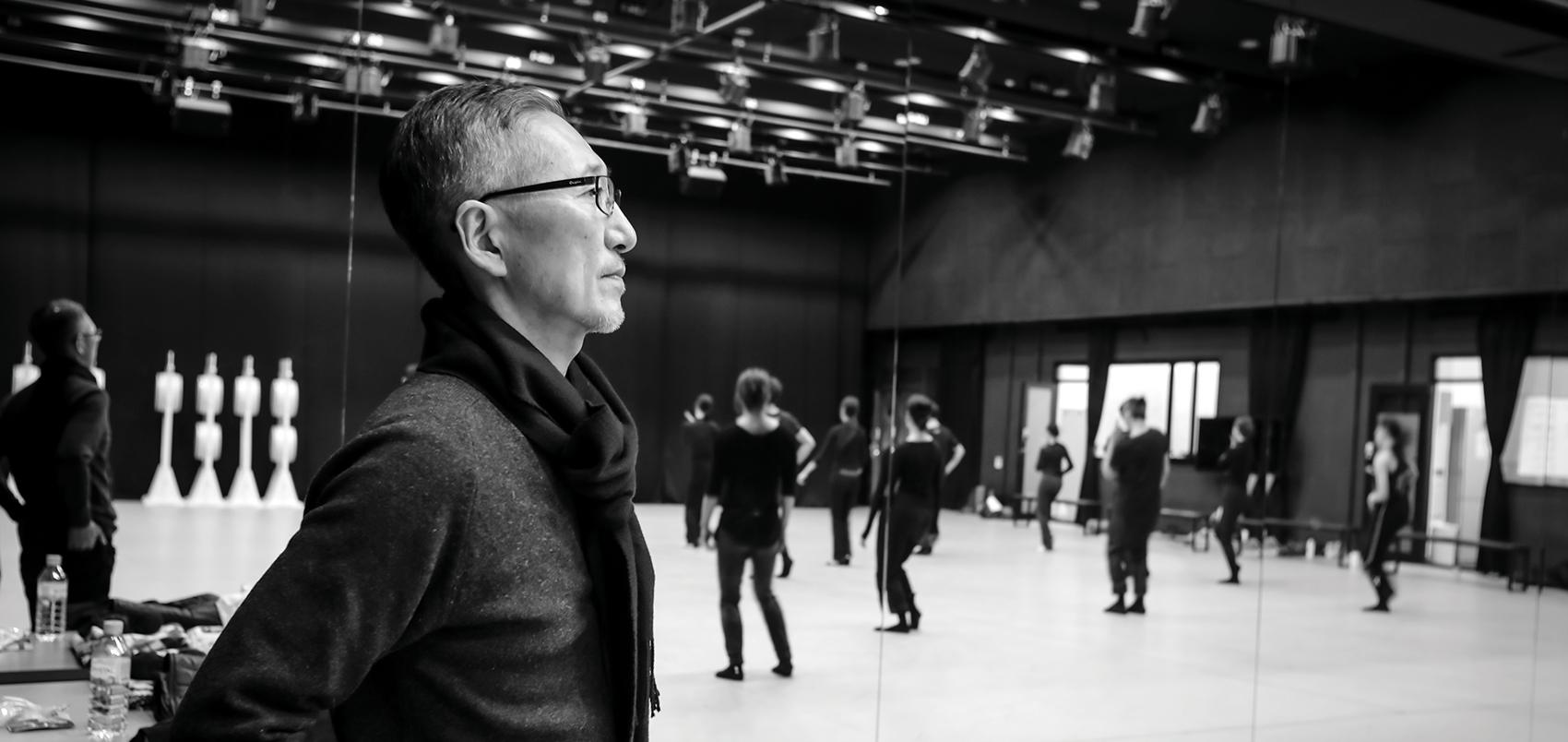
Selection and Concentration
Ahn Sung-su, artistic director of dance at the Korea National Contemporary Dance Company, continues to challenge new areas by establishing relationships with celebrities, such as fashion designer Jung Kuho, and world-renowned organizations, as well as with Korea’s own leading dance companies, including the National Dance Company of Korea and the Korean National Ballet. In particular, he’s highly regarded on the ballet scene, as he has received favorable reviews for several of his works for ballet and his earlier work “Bolero” has been nominated for a Benois de la Dance in 2005, the so-called “Nobel Prize for dancers.” In short, he is a leading choreographer in Korea who is acknowledged globally for his artistic choreography and delicate sensibility.
What journey has he taken to win this fame? Unexpectedly, the beginning of his interest in dance was a movie. When he majored in film at the University of Miami, he saw an animated tango in a lecture called “Documentary and Propaganda.” Watching the characters repeating their various tango dance moves, he had an intense desire that he, himself, wanted to do that. However, it wasn’t easy for a poor student to find dancers or actors with whom to work. His choice was to become a dancer himself. At once, he changed his major from film to dance.
“I make quick decisions. However, once I make a choice, I do my best. To narrow the gap as a late starter, I practiced dancing from dawn to dusk.” He compares moments in his life to the sequence of a film. A director makes a great film through constant selection and concentration of the sequences. Ahn Sung-su himself is both the movie and its director.
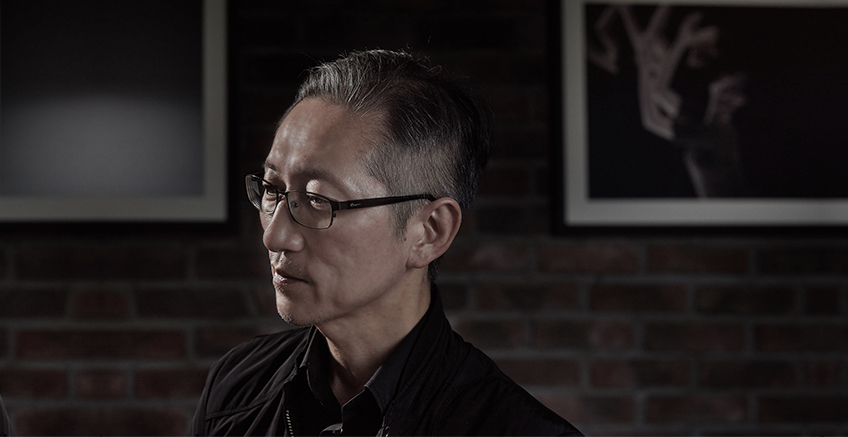
Dance, an Act of Expressing One’s
Realization with Body Movements
After turning to the field of dance, he grew rapidly as a dancer. During his time at the University of Miami, he learned modern dance from renowned contemporary dancer Murray Louis. At that time, he began to think deeply about the creations that could be developed through improvisation.
Then came an opportunity to dance on the stage, not for a movie. Ahn, by now a member of the Miami Dance Company, was selected as one of the first scholarship students at an art college by the founder Daniel Lewis, who was taught by José Limón, a master of contemporary dance. Upon Lewis’s advice, he then applied to the Julliard’s Local Tour Selection and was chosen as a scholarship student.
“Just when I got there, other students were flying and jumping, boasting of their technique. I barely managed to stand on the floor. I thought, ‘Why was I selected?’ Anyway, since I focused on the idea that dancing is an expression of what I realized, I was able to move away from my obsession with technique,” said Ahn. Then he thought more about perception and expression, and was able to concentrate on designing creative works. During his Julliard days, he formed the Ahn Sung-su Pickup Group with other dancers from around the world and performed actively on a variety of occasions, such as at the American Dance Festival, on the Central Park Summer Stage and at the Dance Theater Workshop.
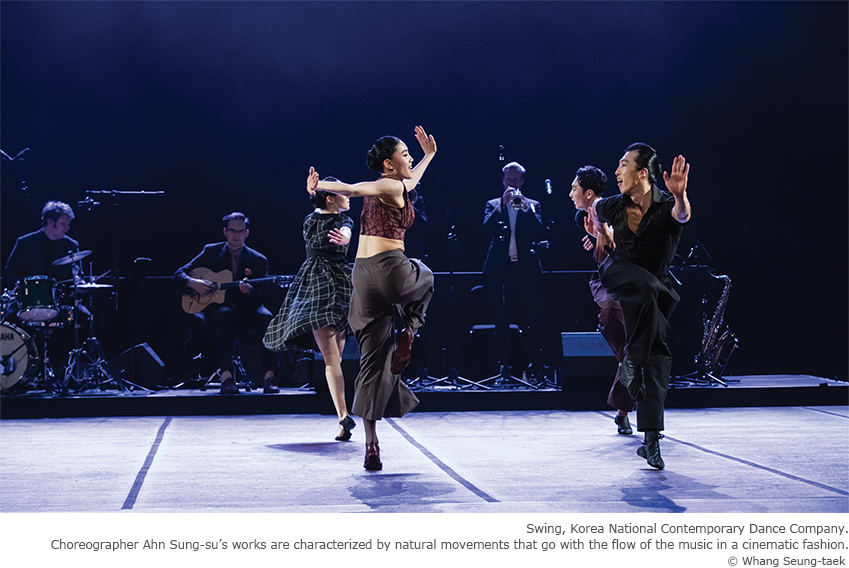
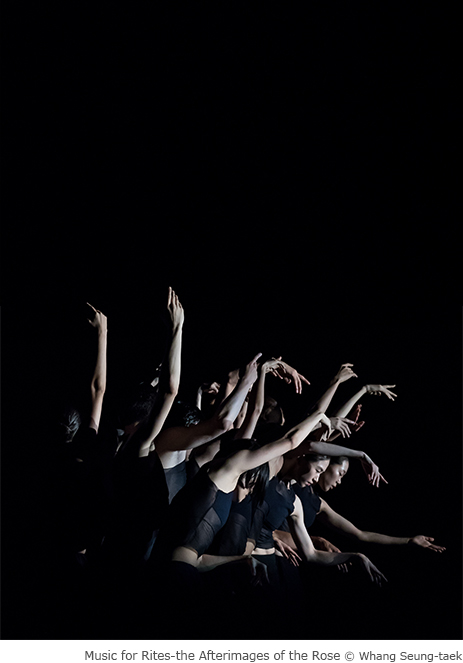
A Stage like a Live Film
Ahn’s works have a brilliant visual effect. The audience can feel as if the beautiful gestures are drawing the music around the stage, and they can see the musical notes with their eyes. He said that he was inspired by music and movies. In “Swing,” performed last month, he featured the Swedish six-piece band Gentleman and Gangsters, which plays traditional New Orleans jazz. The value of his choreography is that the audience feels comfortable only when they can see and enjoy both the music and the dance. Last year’s “Immixture” was choreographed to commemorate the 130th anniversary of diplomatic ties between Korea and France. In this work, which took nearly four years from planning to creation, different East Asian and European musical forms were used in each scene, and modern movements and traditional dances were densely composed to the sound. The music covered various genres, including folk songs from southern Gyeonggi-do Province, the sound of traditional zithers, piano works by Schumann and even pop.
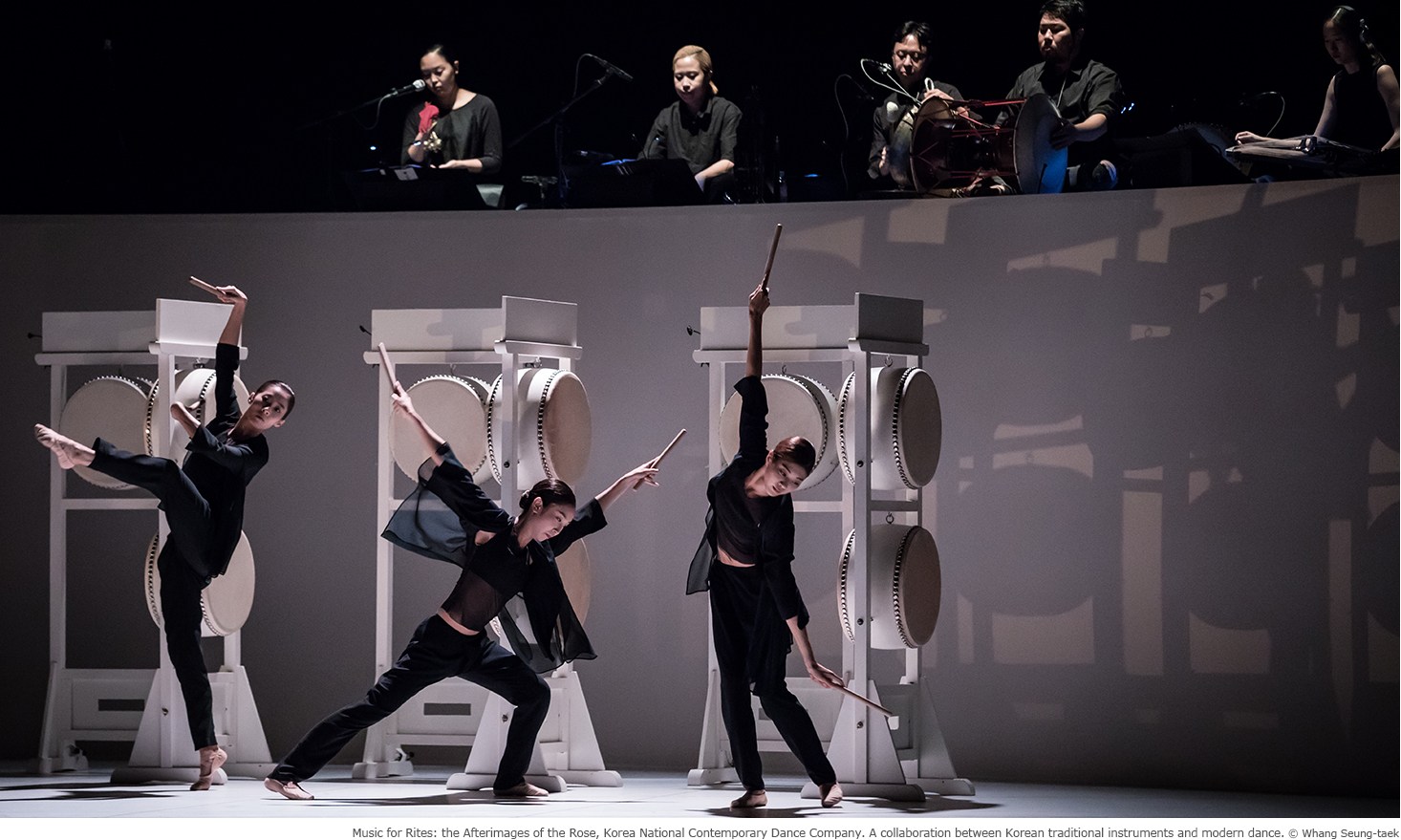
“Music for Rites - The Afterimages of the Rose,” known as an extended version of “Rose” (premiere in 2009), and “Immixture” (premiere in 2016) both feature music composed entirely for traditional Korean musical instruments, excluding any modern instruments. A show that featured traditional Korean music played live as well as modern dancers took place on the same stage, at the same time. It was directed just like a movie. What’s different from movies is that the audience watches a live scene in front of them, rather than an edited version on a screen. In fact, Director Ahn shoots, monitors and edits video clips of every dance sequence. The scenes that have survived his final editing, so to speak, are put to stage. “That’s why I have no regrets about movies now. We make choreography as if we’re making movies. It’s not shot film, but live performances by real people.”
-
Ahn Sung-su Profile
Contemporary dancer and artistic director of dance of the Korea National Contemporary Dance Company
 2018Swing, performed by the Korea National Contemporary Dance Company & Swedish Swing jazz band
2018Swing, performed by the Korea National Contemporary Dance Company & Swedish Swing jazz band 2017Music for Rites - The Afterimages of the Rose, performed by the Korea National Contemporary Dance Company
2017Music for Rites - The Afterimages of the Rose, performed by the Korea National Contemporary Dance Company 2016Immixture, Celebration of the 130th anniversary of diplomatic relations between Korea and France; premiere at Théâtre national de Chaillot in Paris
2016Immixture, Celebration of the 130th anniversary of diplomatic relations between Korea and France; premiere at Théâtre national de Chaillot in Paris 2013Ahn Sung-su & Jung Kuho’s Dan, Choreography Exchange Project by the Korea National Contemporary Dance Company
2013Ahn Sung-su & Jung Kuho’s Dan, Choreography Exchange Project by the Korea National Contemporary Dance Company 2012Poise, Celebration of the 50th anniversary of the regular performance by the Korea National Ballet Company
2012Poise, Celebration of the 50th anniversary of the regular performance by the Korea National Ballet Company 2012Designated Provincial Intangible Cultural Property No. 19 by Jeollabuk-do
2012Designated Provincial Intangible Cultural Property No. 19 by Jeollabuk-do 2009Win the award for best dance at Choreography Art Award
2009Win the award for best dance at Choreography Art Award 2005- Win the award for grand prize for choreography at Art of the Year Award
2005- Win the award for grand prize for choreography at Art of the Year Award
- Win the award for best dance at Choreography Art Award
- Nominated for Benois de la Dance, with Bolero 1999Professor of the School of Dance, the Korea National University of Arts
1999Professor of the School of Dance, the Korea National University of Arts 1992Graduated from the Juilliard School, Bachelor of Dance
1992Graduated from the Juilliard School, Bachelor of Dance
Desire to Make Contemporary Dance
that Communicates with the Audience
The ultimate reason why Ahn Sung-su continues to challenge experimental choreography is for the pure pleasure of the audience. Pleasure is a feeling one can feel in a relaxed, stress-free state. His final goal is not to create a modern dance that’s too heavy or professional for the public to enjoy, but to promote a relaxing performance that they can enjoy with their family, as if they were going to an art gallery on the weekend. In other words, he is constantly challenging experimental choreography to break any prejudices that modern dance is “difficult.” “Human life is all about living together, after all. The feedback from the audience can make the performance better. So the audience can be a contemporary artist, too. That’s why I want to make a work that can pleasure the audience and make them feel what they see.”
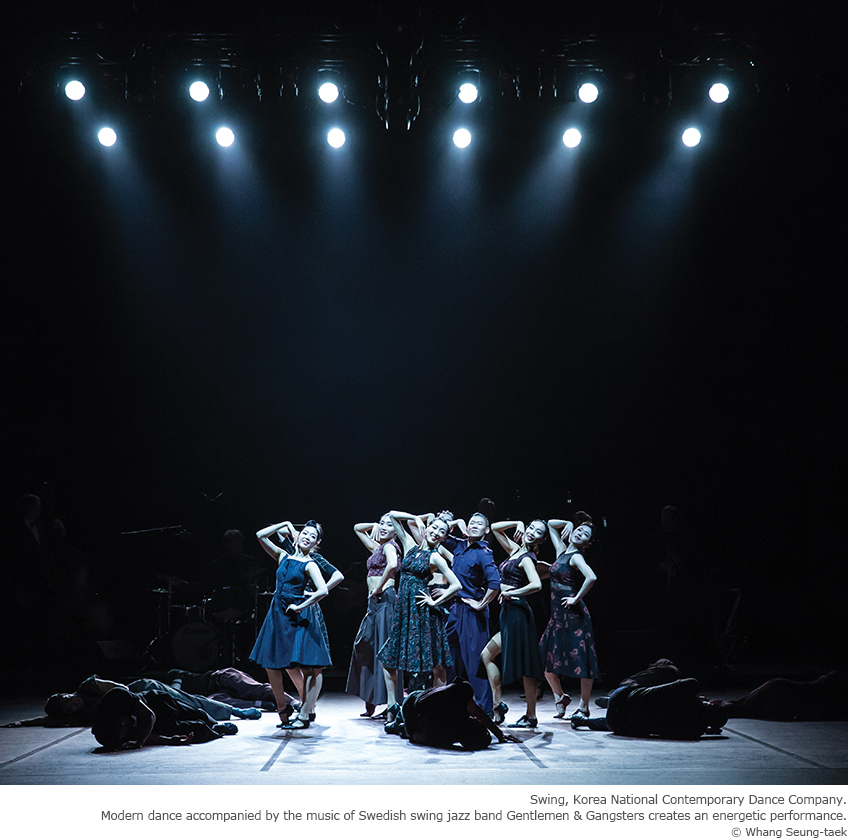
A seemingly easy and natural dance requires a lot of effort that’s generally hidden from plain sight. It’s possible only when performed in perfect composition and without error. His choreography needs much labor, as he says that it’s artificial and what make it look natural is his direction. Due to such intensity in the choreography, dancers can hardly practice longer than three hours a day. Is it because such efforts have resulted in a much more favorable evaluation? He’s still moving toward the next, and the next, and the next, dreaming of calling out, “Let’s dance!” with the audience, the true contemporary artist.
Other Articles




Flowers at Suncheon Bay

Artistic Director of Dance Makes Modern Dance like Live Film

Quilting Squares of Tolerance

2018 Inter-Korean Summit



Application of subscription
Sign upReaders’ Comments
GoThe event winners
Go


 May 2018
May 2018
